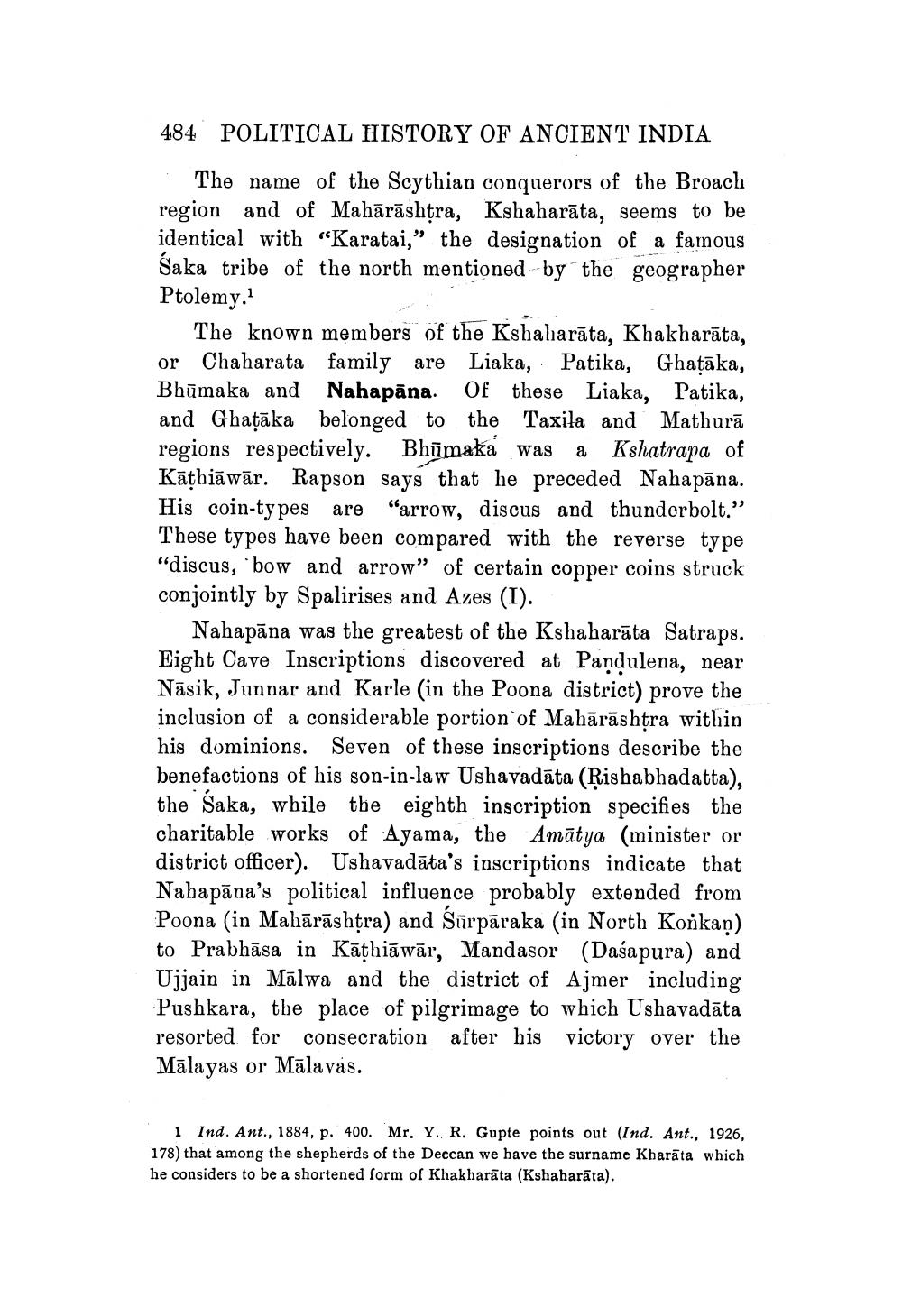________________
484 POLITICAL HISTORY OF ANCIENT INDIA
The name of the Scythian conquerors of the Broach region and of Maharashtra, Kshaharāta, seems to be identical with "Karatai," the designation of a famous Saka tribe of the north mentioned by the geographer Ptolemy.1
The known members of the Kshaharāta, Khakharāta, Chaharata family are Liaka, Patika, Ghaṭāka, Bhumaka and Nahapāna. Of these Liaka, Patika, and Ghaṭaka belonged to the Taxila and Mathurā regions respectively. Bhumaka was a Kshatrapa of Kathiawar. Rapson says that he preceded Nahapāna. His coin-types are "arrow, discus and thunderbolt." These types have been compared with the reverse type "discus, bow and arrow" of certain copper coins struck conjointly by Spalirises and Azes (I).
or
Nahapana was the greatest of the Kshaharāta Satraps. Eight Cave Inscriptions discovered at Pandulena, near Nasik, Junnar and Karle (in the Poona district) prove the inclusion of a considerable portion of Mahārāshtra within his dominions. Seven of these inscriptions describe the benefactions of his son-in-law Ushavadāta (Rishabhadatta), the Saka, while the eighth inscription specifies the charitable works of Ayama, the Amatya (minister or district officer). Ushavadata's inscriptions indicate that Nahapana's political influence probably extended from Poona (in Maharashtra) and Śūrpāraka (in North Konkan) to Prabhasa in Kathiawar, Mandasor (Daśapura) and Ujjain in Malwa and the district of Ajmer including Pushkara, the place of pilgrimage to which Ushavadāta resorted for consecration after his victory over the Malayas or Malavas.
1 Ind. Ant., 1884, p. 400. Mr. Y.. R. Gupte points out (Ind. Ant., 1926, 178) that among the shepherds of the Deccan we have the surname Kharata which he considers to be a shortened form of Khakharata (Kshaharāta).




